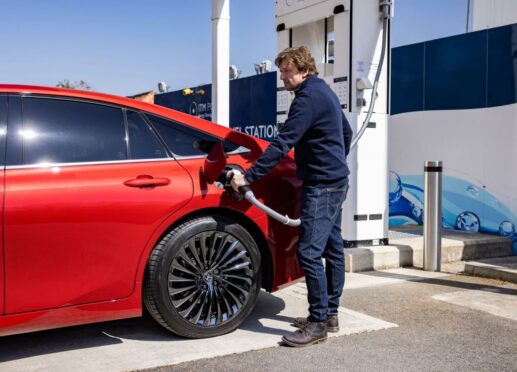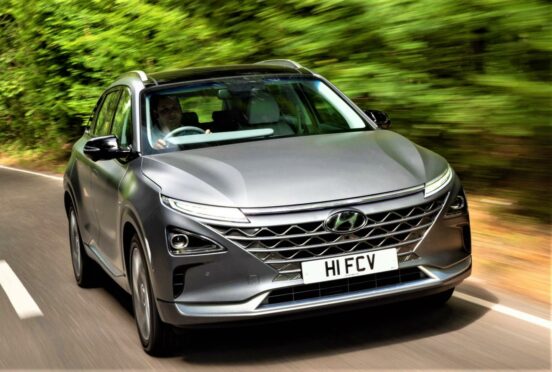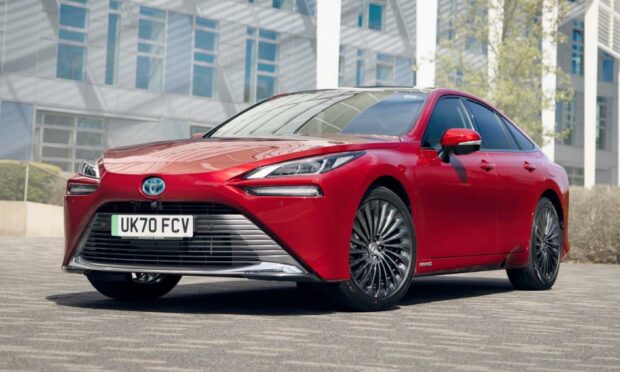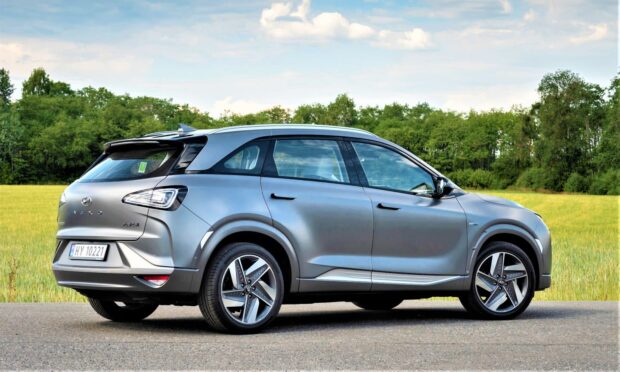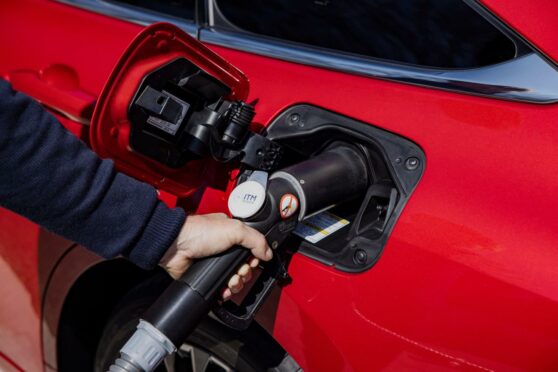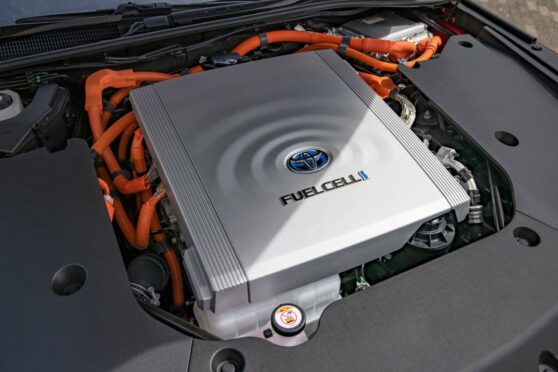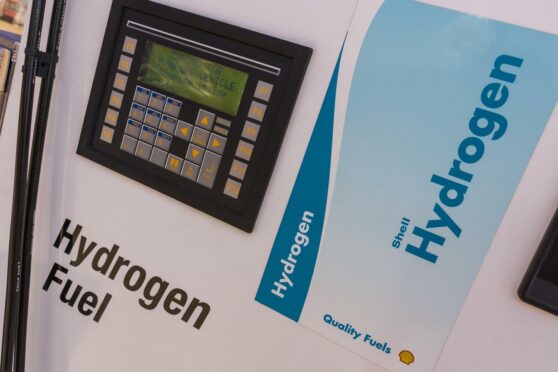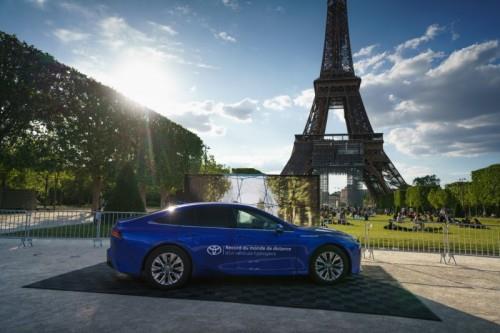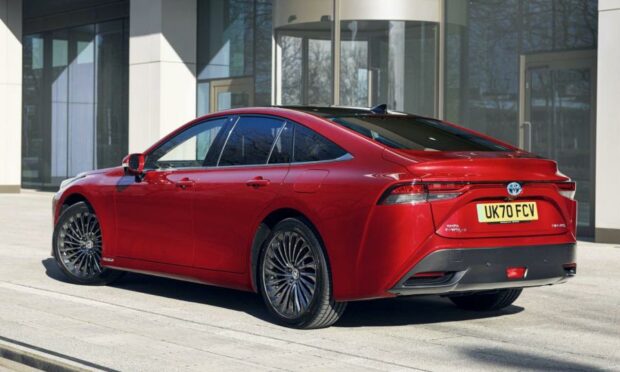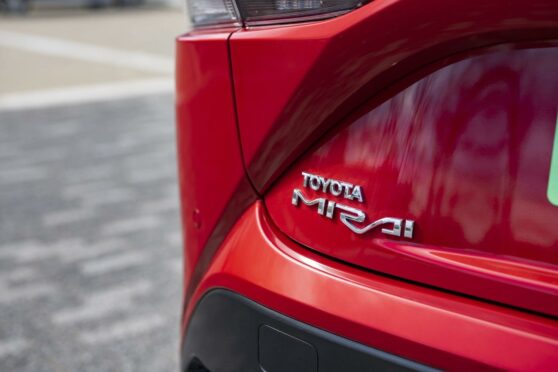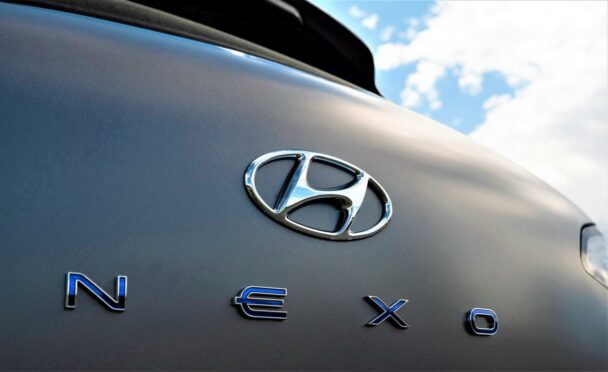Hydrogen is seen by many people as the future of car propulsion. But how does it actually work?
Though it’s clear to see that a lot of weight is being thrown behind battery-electric cars, hydrogen-electric power is just as clean as a regular electric car but somewhat quicker to fill – and could prove to be the ideal fuel for the future.
And though there are only two hydrogen-powered cars currently on sale in the UK – the Toyota Mirai and Hyundai’s Nexo – the fuel is rapidly gaining traction, with Hyundai recently pledging even more support for the fuel, particularly in the future of commercial vehicles. Let’s take a look at what else you need to know about hydrogen power.
How does hydrogen actually work?
Though it can feel like hydrogen power and conventional battery-electric cars are like chalk and cheese, the reality is that the two powertrains are quite similar. Both use an electric motor for propulsion and incorporate a battery, but in hydrogen cars, the latter is much smaller.
The reason? Well, it’s hooked up to a hydrogen fuel cell and storage tank which provide the energy. Hydrogen stored within the tank is fed into the fuel cell where it is mixed with oxygen and this then keeps the battery topped up. The emissions? Just water.
How long to “fill” a car?
That’s one of the real benefits of hydrogen. Whereas you’ll spend a certain amount of time charging up an electric car – with even the very fastest chargers taking at least 25-30 minutes to take a car from five to 80% – a full fill-up of hydrogen will take around the same time as a petrol or diesel car to top up.
How many miles from a fill-up?
Hydrogen-powered vehicles return a decent range on a full tank. The new second-generation Toyota Mirai, for instance, says it has a driving range of between 300 and 400 miles.
Hyundai Nexo claims to have the best range within the fuel cell and EV car segment of 413 miles – comparable to an internal combustion engine and allowing drivers to travel long distances.
However, these distances are being improved and should offer excellent – or superior – range by the time more variants and models have hit the mainstream market.
The cost of hydrogen
It’s not as expensive as you would think. A full fill-up of Toyota’s Mirai will cost around £60, or about the same as an average-sized petrol car.
To compare to EVs, to charge at home, the Tesla Model 3 Standard Range Plus costs £9.40 to top up with a 210 mile range (£0.045 cost per mile), and the Audi e-tron S 55 quattro at £16.22 with a 200 mile range (£0.081 average cost per mile).
To purchase, the entry-level Design variant of the Toyota Mirai costs £49,995 with business contract hire rates starting from £435 per month (excluding VAT). The Hyundai Nexo costs from £68,856 with a fuel tank capacity of 157 litres.
To compare, the all-electric Lexus UX 300e costs from £41,745.00, with the Renault from £29,295.
Safety concerns
Very few. In fact, during recent Euro NCAP safety tests, engineers paid particular attention to how the hydrogen-powered Toyota Mirai coped in a collision. However, they found that the hydrogen powertrain had no negative effect on the car’s overall safety and gave it a full five-star rating.
Hydrogen filling stations
Currently, there are just 11 hydrogen filling stations in the UK, with the bulk of these located around London. The only location in the north of England is in Sheffield, but between here and the southern-based stations there’s a large blank area.
Aberdeen has two publicly accessible hydrogen stations, and more are planned across the UK to alleviate the problem.
Can it work for the future?
Well, the evidence certainly seems to support this. Earlier this year, the Toyota Mirai broke the world record for distance driven with one fill of hydrogen to over 1000 km.
The journey started on Wednesday 26th of May at 5:43 am from the HYSETCO hydrogen station in Orly outside Paris and finished after driving 1003 km on one single fill through public roads, south of Paris and in the Loir-et-Cher and Indre-et-Loire areas.
Green hydrogen was used during the record attempt and the average fuel consumption was 0.55 kg/100km, with the Mirai being able to store 5.6 kg of hydrogen.
After breaking the record, Mirai was refuelled, ready to go again in just five minutes.
Frank Marotte, CEO of Toyota France, said: “It’s an amazing challenge that we achieved with the new Mirai. Internally, it is the mindset of Start your Impossible, going beyond our own limits, that drives us, and we proved it again today.”
Available hydrogen vehicles
It’s true that, at present, choice is limited when it comes to hydrogen-powered cars. With just the Hyundai Nexo and Toyota Mirai on sale, it could be thought that manufacturers aren’t confident in the fuel. However, some manufacturers have committed to further developing hydrogen fuel, with others certain to follow.
Thomas A. Schmid, chief operating officer of Hyundai Motor Europe, said: “Hyundai Motors is already market leader in fuel cell technology across Europe. Over 70% of all fuel cell cars driving in Europe are made by Hyundai.
“The All-New NEXO is an essential step in our eco car strategy to launch 18 new eco cars globally until 2025. It reflects our strong commitment in clean future mobility.”
More models are due to enter the market soon, with BMW currently developing a hydrogen-powered version of its X5 – badged iX5 – along with newcomer Genesis, which has also stated that it’ll be bringing a hydrogen car to market.
